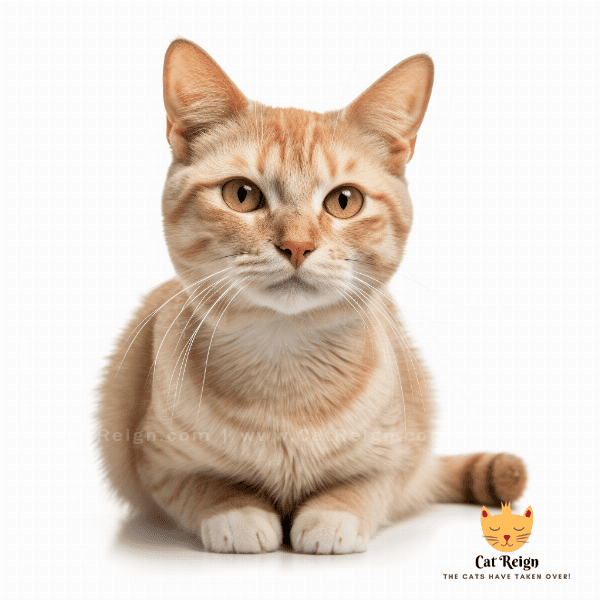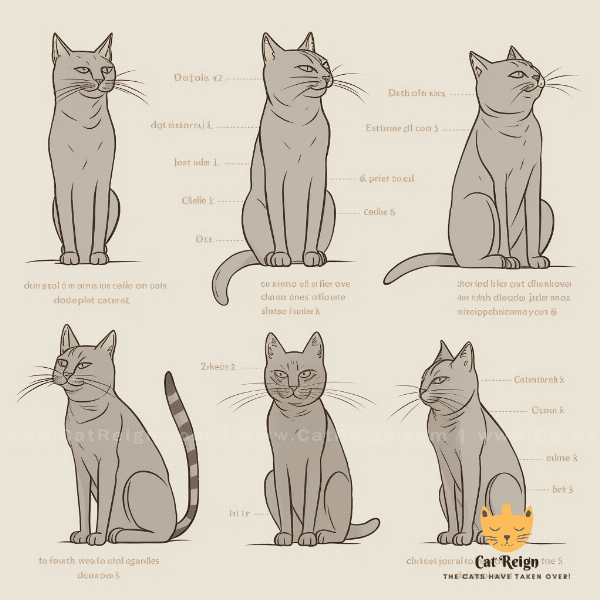Table of Contents
- Types of Aggressive Cat Body Language
- Signs of a Stressed Cat
- Common Triggers for Aggression in Cats
- How to Approach an Aggressive Cat
- Tips for Dealing with Aggressive Cat Behavior
- Understanding the Role of Body Language in Cat Communication
- The Importance of Socializing Kittens
- When to Seek Professional Help for Aggressive Cats
- Training Techniques for Aggression in Cats
- Preventing Aggressive Behavior in Cats
Types of Aggressive Cat Body Language
Cats are known for their mysterious and often unpredictable behavior, especially when they’re feeling aggressive. Understanding the different types of aggressive body language can help you identify when your cat is feeling stressed, afraid, or ready to attack.
1. Defensive Aggression
Defensive aggression is a common type of aggressive behavior in cats. This occurs when a cat feels threatened or cornered and reacts by displaying defensive body language. Defensive aggression may include hissing, growling, flattening of the ears, and swishing of the tail.
2. Territorial Aggression
Territorial aggression occurs when a cat feels its space is being invaded. This type of aggression can be directed towards other cats or humans. Territorial aggression can be identified by a cat’s body language, including arched back, hair standing up, and a low growling or hissing sound.
4. Play Aggression
Play aggression is a common type of aggressive behavior in kittens and young cats. This behavior often involves stalking, pouncing, biting, and scratching during playtime. While play aggression is not necessarily harmful, it can become an issue if the cat does not learn appropriate play behavior as it grows older.
5. Predatory Aggression
Predatory aggression is a natural behavior in cats, as they are hunters by nature. However, this type of aggression can be dangerous towards other pets or even humans if not redirected appropriately. Signs of predatory aggression may include dilated pupils, crouching, and stalking behavior.
Understanding the different types of Aggressive cat body language can help you identify when your cat is feeling threatened or stressed. By recognizing these signs early on, you can take steps to prevent aggressive behavior and keep both yourself and your cat safe.
 Cat body language”>
Cat body language”>Signs of a Stressed Cat
Cats are complex creatures that can experience a wide range of emotions, just like humans. When a cat is stressed, it may display a variety of physical and behavioral signs that can indicate that it’s feeling overwhelmed or anxious. Here are some common signs of a stressed cat:
1. Excessive Grooming
While cats are known for being fastidious groomers, excessive grooming can be a sign of stress. This behavior may include over-grooming in one spot, causing hair loss or skin irritation.
2. Changes in Appetite
Stress can also affect a cat’s appetite, causing them to either overeat or lose interest in food altogether. This can result in weight gain or weight loss, depending on the individual cat.
3. Avoidance Behavior
When a cat is stressed, it may try to avoid certain people, objects, or situations. This behavior may include hiding, running away, or staying in one spot for an extended period.
4. Aggressive Behavior
Stress can also cause cats to display aggressive behavior towards other animals or humans. This may include hissing, growling, swatting, or biting.
5. Changes in Sleep Patterns
When cats are stressed, they may have difficulty sleeping or may sleep more than usual. This behavior can be caused by a variety of factors, including anxiety, changes in routine, or underlying health conditions.
6. Litter Box Issues
Stress can also lead to litter box issues, such as urinating or defecating outside the litter box. This behavior may be caused by anxiety, changes in the household, or underlying medical conditions.
By recognizing the signs of a stressed cat, you can take steps to alleviate the stress and prevent it from becoming a more serious issue. Providing a calm and predictable environment, ensuring your cat has a comfortable space to retreat to, and offering plenty of mental and physical stimulation can all help reduce stress in cats. If you’re concerned about your cat’s stress levels, consult with your veterinarian for further guidance.
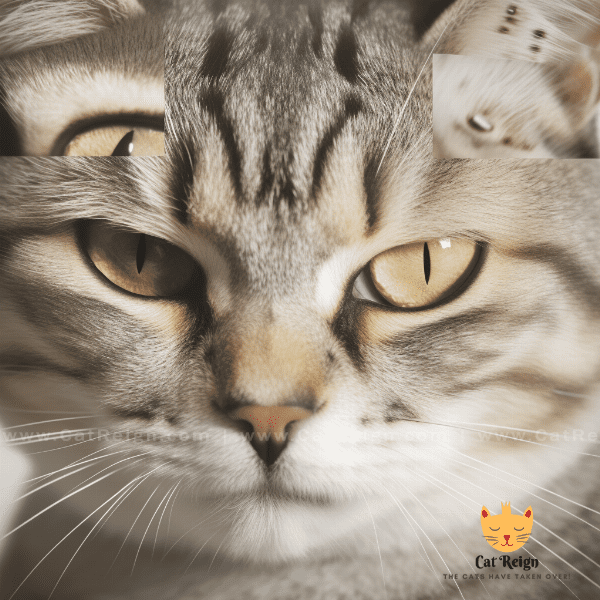
Common Triggers for Aggression in Cats
Aggressive behavior in cats can be triggered by a variety of factors, ranging from environmental stressors to underlying medical conditions. Here are some common triggers for aggression in cats:
1. Fear and Anxiety
Fear and anxiety are common triggers for aggressive behavior in cats. This may be caused by loud noises, unfamiliar people or animals, or changes in routine or environment.
2. Pain or Discomfort
Underlying medical conditions, such as arthritis or dental pain, can cause cats to become irritable and aggressive. It’s important to have your cat regularly examined by a veterinarian to ensure that any underlying health issues are properly diagnosed and treated.
3. Territorial Instincts
Cats are territorial animals, and they may become aggressive if they feel that their territory is being threatened. This may include other cats or animals in the household, as well as unfamiliar people or animals outside of the home.
4. Redirected Aggression
As mentioned earlier, redirected aggression can also be a trigger for aggressive behavior in cats. This may occur when a cat sees a potential threat outside a window but cannot access it, and instead turns its aggression towards another cat or human in the household.
5. Lack of Socialization
Cats that have not been properly socialized may be more prone to aggressive behavior towards people or other animals. Socialization should begin early in a cat’s life, and it’s important to expose them to a variety of people, animals, and situations to help them become well-adjusted and confident.
6. Previous Trauma
Cats that have experienced trauma, such as abuse or neglect, may be more prone to aggressive behavior. These cats may require extra patience and understanding to help them overcome their fears and build trust with their caregivers.
Understanding the common triggers for aggressive behavior in cats can help you identify potential issues and take steps to prevent or manage them. By providing a safe and comfortable environment, addressing any underlying health issues, and providing appropriate mental and physical stimulation, you can help reduce the likelihood of aggression in your cat. If you’re concerned about your cat’s behavior, consult with a veterinarian or animal behaviorist for further guidance.

How to Approach an Aggressive Cat
1. Observe the Cat’s Body Language
Before approaching a cat, it’s important to observe its body language to determine its mood. Signs of aggression may include hissing, growling, flattening of the ears, and a swishing tail. If the cat displays any of these signs, it’s best to avoid approaching and give it space.
2. Use Calming Signals
When approaching an aggressive cat, use calming signals to help put it at ease. These signals may include avoiding direct eye contact, speaking softly, and offering treats or toys.
3. Allow the Cat to Approach You
Rather than approaching the cat, allow it to approach you on its own terms. This can help the cat feel more in control of the situation and reduce the likelihood of aggression.
4. Offer a Safe Retreat
When approaching an aggressive cat, provide a safe retreat for the cat to escape to if it feels threatened. This may include a covered crate, a hiding place, or a high perch.
5. Avoid Punishment
Punishing an aggressive cat can make the behavior worse and may cause the cat to become more fearful or anxious. Instead, focus on positive reinforcement and reward the cat for good behavior.
.
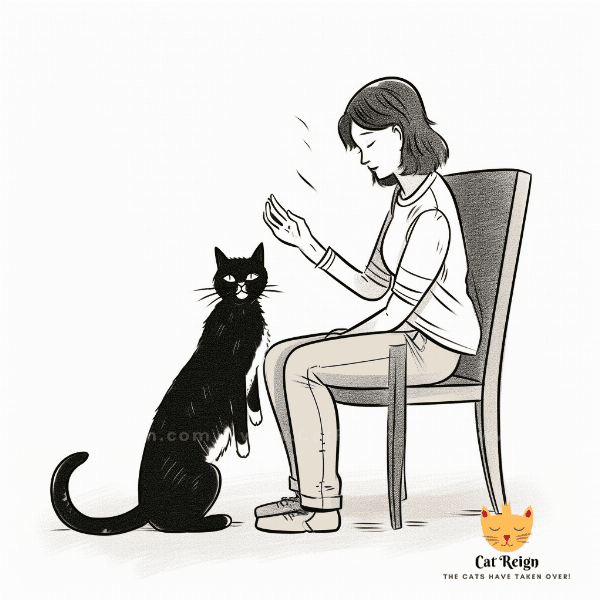
Tips for Dealing with Aggressive Cat Behavior
Dealing with an aggressive cat can be stressful and challenging, but there are several strategies you can use to manage the behavior and keep both yourself and your cat safe. Here are some tips for dealing with aggressive cat behavior:
1. Establish a Routine
Establishing a routine can help reduce stress and anxiety in cats, which can in turn help reduce aggressive behavior. Stick to a regular schedule for feeding, playtime, and other activities, and provide your cat with a comfortable and predictable environment.
2. Provide Mental and Physical Stimulation
Cats need mental and physical stimulation to stay healthy and happy, and a lack of stimulation can lead to boredom and frustration, which can contribute to aggressive behavior. Provide your cat with toys, scratching posts, and other forms of enrichment to keep them mentally and physically stimulated.
3. Redirect Aggression
When a cat displays aggressive behavior, it’s important to redirect that behavior in a positive way. For example, if your cat is scratching furniture, provide them with a scratching post or mat and reward them for using it.
4. Use Positive Reinforcement
Positive reinforcement is a powerful tool for managing cat behavior. Reward your cat for good behavior, such as using their litter box or playing appropriately, and avoid punishing them for bad behavior.
5. Provide a Safe Environment
Providing a safe environment for your cat can help reduce stress and anxiety, which can in turn help reduce aggressive behavior. Ensure that your cat has a comfortable space to retreat to, and provide hiding places, high perches, and other forms of environmental enrichment.
6. Seek Professional Help
Dealing with aggressive cat behavior can be challenging, but by following these tips and seeking professional help if needed, you can help manage the behavior and provide a safe and comfortable environment for your cat.

Understanding the Role of Body Language in Cat Communication
Body language plays a critical role in how cats communicate with each other and with humans. Understanding the subtle cues that cats use to convey their feelings can help you build a stronger bond with your cat and improve your ability to recognize and respond to their needs. Here are some key points to keep in mind:
1. The Tail
The position of a cat’s tail can communicate a range of emotions. A relaxed, gently swishing tail indicates contentment, while an upright, puffed tail may indicate fear or aggression.
2. The Ears
A cat’s ears can also communicate a range of emotions. A relaxed, forward-facing position indicates curiosity or contentment, while flattened or sideways ears may indicate fear, anxiety, or aggression.
3. The Eyes
Cats use their eyes to communicate a range of emotions as well. Dilated pupils may indicate fear or excitement, while narrowed pupils may indicate aggression or stress.
4. The Body
A cat’s overall body posture can also convey its emotional state. An arched back may indicate fear or aggression, while a relaxed, stretched-out posture may indicate contentment.
5. Vocalizations
In addition to body language, cats also use vocalizations to communicate. Hissing, growling, and spitting may indicate fear or aggression, while purring and meowing may indicate contentment or a desire for attention.
Understanding the role of body language in cat communication can help you better understand your cat’s needs and emotions. By paying attention to your cat’s body language and vocalizations, you can respond appropriately to their needs and build a stronger bond with your feline companion.

The Importance of Socializing Kittens
Socialization is a critical process for kittens that involves exposing them to a variety of people, animals, and environments to help them become well-adjusted and confident cats. Socialization should begin early in a kitten’s life, ideally between 2 and 7 weeks of age. Here are some key points to keep in mind:
1. Benefits of Socialization
Proper socialization can have numerous benefits for kittens, including improved behavior, reduced fear and anxiety, and increased confidence. Socialized kittens are more likely to be friendly and affectionate towards humans and other animals, and they are less likely to display aggressive or destructive behavior.
2. Exposure to People
Exposing kittens to a variety of people, including children, adults, and seniors, can help them become comfortable around different types of people. It’s important to ensure that interactions are positive and supervised, and to avoid overwhelming the kitten with too much stimulation at once.
3. Exposure to Animals
Socializing kittens with other animals, such as cats and dogs, can help them become comfortable and confident around other pets. This can reduce the likelihood of aggressive behavior towards other animals in the future.
4. Exposure to Environments
Exposing kittens to different environments, such as the outdoors, the car, and different rooms in the house, can help them become comfortable in a variety of settings. This can reduce anxiety and stress when the kitten encounters new environments in the future.
5. Proper Handling and Training
Socializing kittens is a critical process that can have long-lasting effects on their behavior and overall well-being. By exposing kittens to a variety of people, animals, and environments, and providing appropriate handling and training, you can help them become well-adjusted and confident cats.
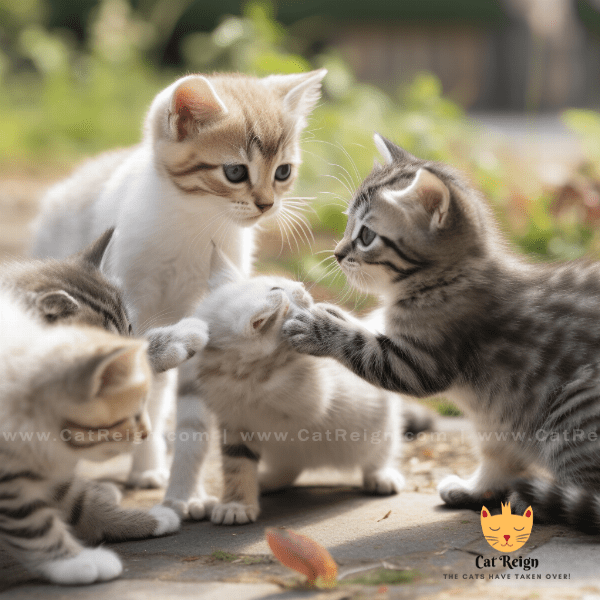
When to Seek Professional Help for Aggressive Cats
Dealing with an aggressive cat can be challenging, and in some cases, it may be necessary to seek professional help to manage the behavior. Here are some signs that it may be time to seek professional help for your aggressive cat:
1. Aggressive Behavior is Frequent or Severe
If your cat displays aggressive behavior frequently or the behavior is severe, it may be time to seek professional help. This may include hissing, growling, swatting, biting, or scratching.
2. Aggressive Behavior is Triggered by Specific Situations
If your cat’s aggression is triggered by specific situations, such as the presence of other animals or visitors, it may be a sign that they need professional help to manage their behavior in those situations.
3. Aggressive Behavior is Interfering with Your Ability to Care for Your Cat
If your cat’s aggressive behavior is interfering with your ability to care for them, such as preventing you from grooming them or providing medical care, it may be time to seek professional help.
4. Other Interventions Have Not Been Effective
If you have tried other interventions, such as redirecting the behavior or providing environmental enrichment, and they have not been effective, it may be time to seek professional help.
5. Aggressive Behavior is Out of Character
If your cat’s aggressive behavior is out of character for them, it may be a sign that there is an underlying medical or psychological issue that needs to be addressed by a professional.
If you’re concerned about your cat’s aggressive behavior, it’s important to seek professional help from a veterinarian or animal behaviorist. They can help determine the underlying cause of the behavior and provide guidance on managing it effectively. By seeking professional help, you can help ensure the safety and well-being of both yourself and your cat.

Training Techniques for Aggression in Cats
Training techniques can be effective for managing aggressive behavior in cats. Here are some strategies that may be helpful:
1. Positive Reinforcement
Positive reinforcement is a powerful tool for managing cat behavior. Rewarding good behavior with treats, toys, and attention can help encourage desirable behavior and discourage aggressive behavior.
2. Clicker Training
Clicker training is a popular training technique that uses a clicker to mark desired behavior and reward the cat with a treat or toy. This can be effective for teaching the cat new behaviors and reinforcing positive behavior.
3. Desensitization
Desensitization involves gradually exposing the cat to a trigger that causes aggressive behavior, such as the presence of another cat, in a controlled and positive way. This can help the cat become more comfortable and less reactive to the trigger over time.
4. Counter-Conditioning
Counter-conditioning involves pairing a trigger that causes aggressive behavior, such as the presence of another cat, with something positive, such as treats or playtime. This can help the cat develop a more positive association with the trigger and reduce aggressive behavior.
6. Medication
In some cases, medication may be necessary to manage aggressive behavior in cats. This should only be done under the guidance of a veterinarian or animal behaviorist.
Training techniques can be effective for managing aggressive behavior in cats, but it’s important to remember that every cat is unique and may require a different approach. If you’re struggling to manage your cat’s aggression, seek professional help from a veterinarian or animal behaviorist. They can help determine the underlying cause of the behavior and provide guidance on the best training techniques to manage it effectively.
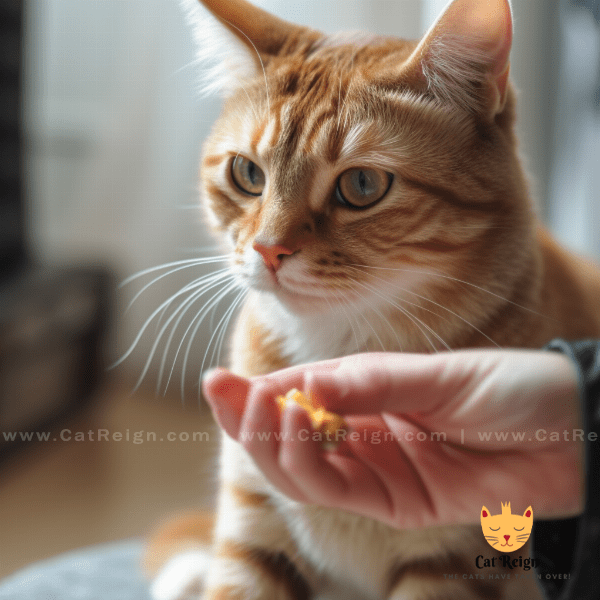
Preventing Aggressive Behavior in Cats
Preventing aggressive behavior in cats is easier than treating it once it develops. Here are some strategies that can help prevent aggressive behavior in cats:
1. Socialization
Socializing kittens early in life can help prevent aggressive behavior by exposing them to a variety of people, animals, and environments. This can help them become well-adjusted and confident cats.
2. Proper Handling and Training
Proper handling and training can also help prevent aggressive behavior in cats. This may include teaching appropriate play behavior, providing appropriate litter box training, and handling the cat gently and appropriately.
3. Environmental Enrichment
Providing environmental enrichment, such as toys, scratching posts, and hiding places, can help prevent boredom and frustration, which can contribute to aggressive behavior.
4. Consistency
Consistency is important for preventing aggressive behavior in cats. Stick to a regular schedule for feeding, playtime, and other activities, and provide a comfortable and predictable environment.
5. Attention and Affection
Providing attention and affection can help prevent aggressive behavior in cats by reducing stress and anxiety. Spend time playing with your cat and providing positive reinforcement for good behavior.
Preventing aggressive behavior in cats requires a proactive approach that focuses on socialization, proper handling and training, environmental enrichment, consistency, and attention and affection. By following these strategies, you can help prevent aggressive behavior and provide a safe and comfortable environment for your feline companion.


